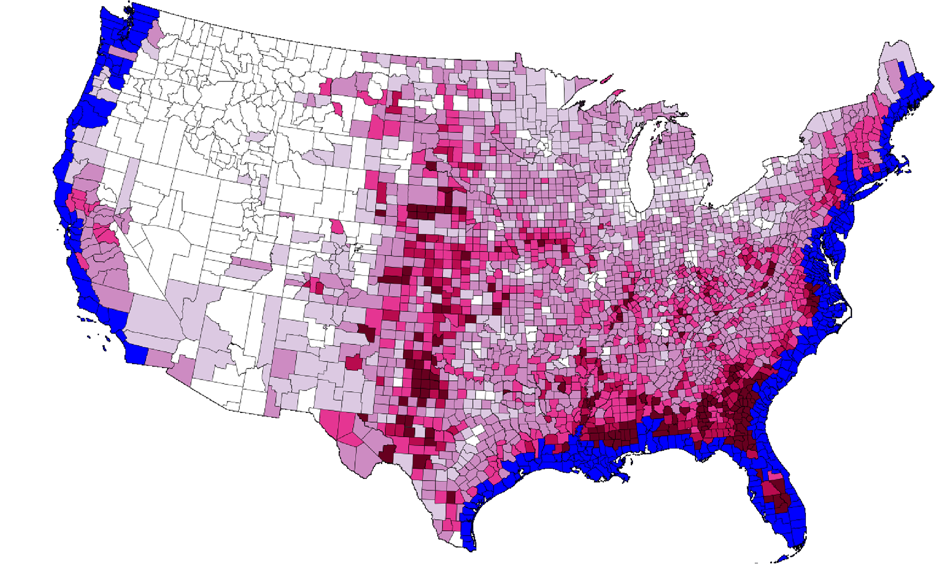New study estimates U.S. climate migrations

Climate migrations are already happening across the world, although not always talked about in those words and often having more to do with droughts and famine. With sea level rise and worsening weather, those migrations are bound to multiply and accelerate, including intra country, especially in a large country with a lot of coasts.
Bistra Dilkina, a computer scientist at the University of Southern California, led a study to try and predict how sea level rise might drive U.S. migration patterns in the future. They based their estimates on the movements of displaced residents following Hurricanes Katrina and Rita, used analysis from the National Oceanic and Atmospheric Administration (NOAA) on the effects of sea level rise, and then “trained a machine-learning model to predict where coastal populations will move when forced to leave their homes—and how that, in turn, affects the migration of non-coastal residents.”
Dilkina is careful to describe the study as only an “approximation” of how sea level change might drive migration patterns, not a precise picture of where people will actually move. “There’s still a lot of need for understanding different drivers and externalities.”
Other factors will have an impact, which means a lot more work and more data will have to go into these models so they can be used to plan appropriate measures in the coming years.
For one thing, sea level rise is just one effect of climate change. Heat waves will drive people north—and could make make cities like Duluth and Buffalo “climate havens.” Urban flooding will reshuffle populations within a city. And extreme storms will move people in yet other ways. Meanwhile, as in Paradise, “forest fires are going to have dramatic effects on the West Coast, including the Pacific Northwest,” says Keenan. “All of those things are changing land economics, housing economics, and public finance.”
Image credit: Modeling migration patterns in the USA under sea level rise report, under a Creative Commons Attribution 4.0 International licence.





Stay Connected